Learning Mathematics Through Programming and Interactive Graphics with p5.js
Juan Carlos Ponce Campuzano

Meanjin DELTA
Brisbane, Australia, November 23-28, 2025
Workshop
• What is p5.js?
What do we cover?
Part I
• Geometric transformations:
Translation, Rotation, and Scaling
Part III
• The for loop & Conditionals
• A brief introduction to the online editor
• Motion
• Functions (If time allows it)
Part II
Part I
• What is p5.js?
• A brief introduction to the online editor
What is p5.js?
p5.js is a library and a set of tools that make it easier to use the JavaScript programming language for creative coding.
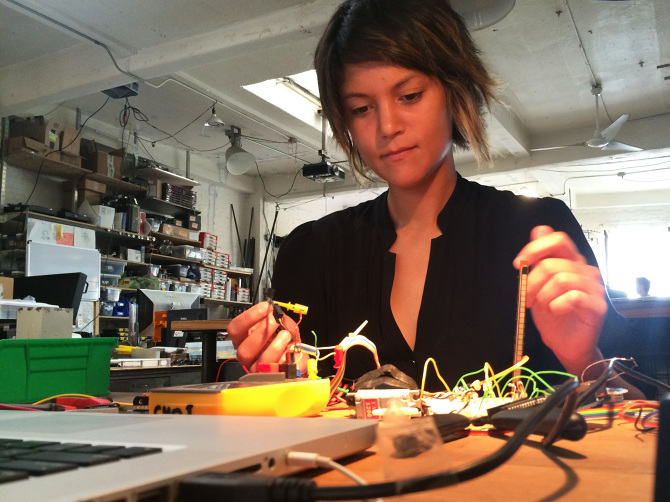
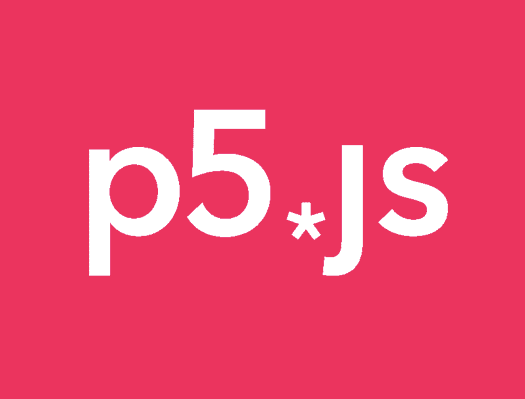
2013: Lauren McCarthy
Programming language based on
JavaScript
What is p5.js?


2013: Lauren McCarthy
Programming language based on
JavaScript
2001: Casey Reas & Ben Fry
creators of Processing
Programming language based on Java
What is p5.js?

An advantage of using p5.js is that it is based on
JavaScript
Open source
What is p5.js?

An advantage of using p5.js is that it is based on
JavaScript
The three main components of almost every website!
Open source
What is p5.js?
The main goal of p5.js (and Processing) is to learn programming through simple instructions.
What is p5.js?
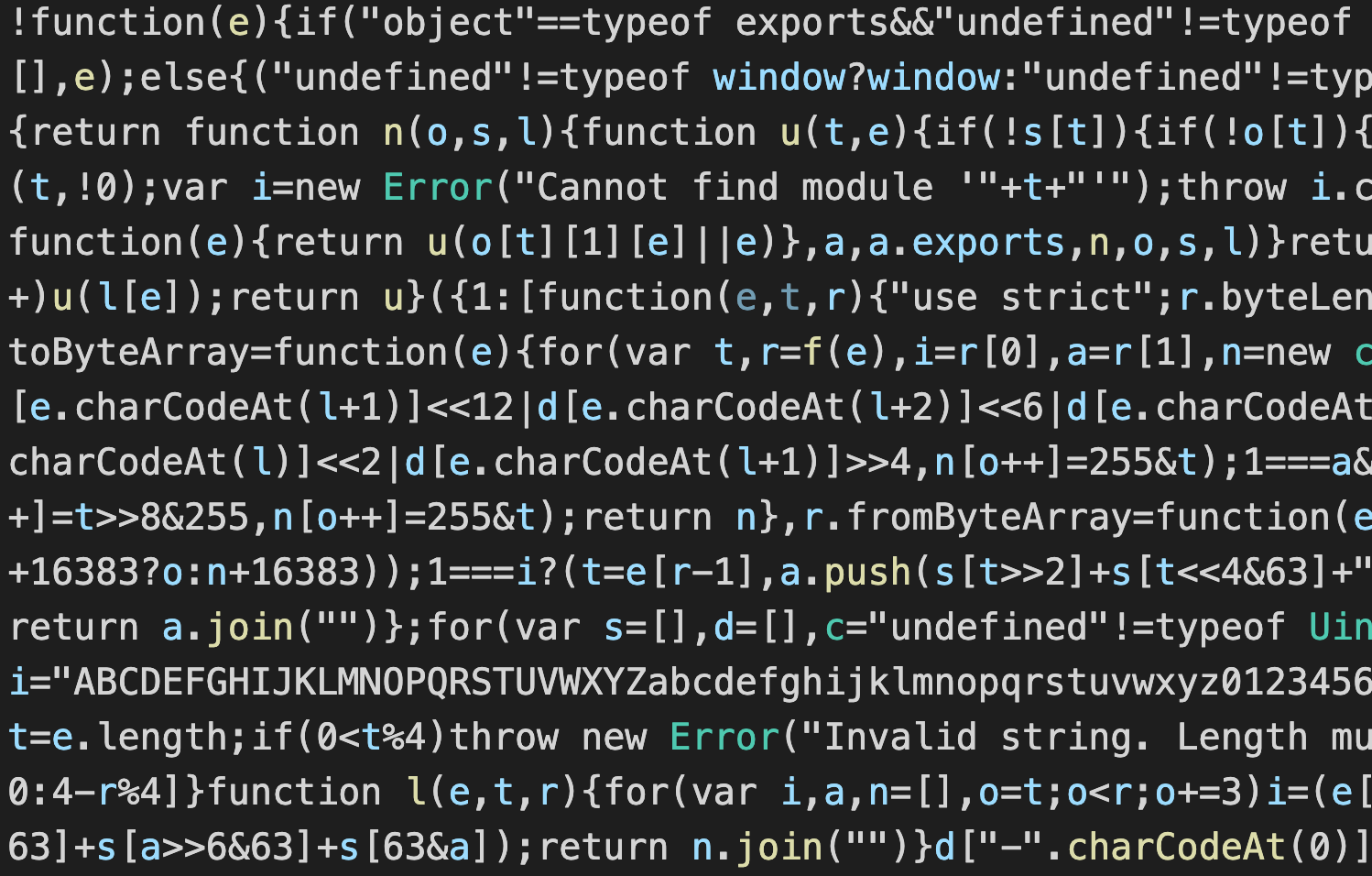
😕
???
The main goal of p5.js (and Processing) is to learn programming through simple instructions.
What is p5.js?
😃
😕
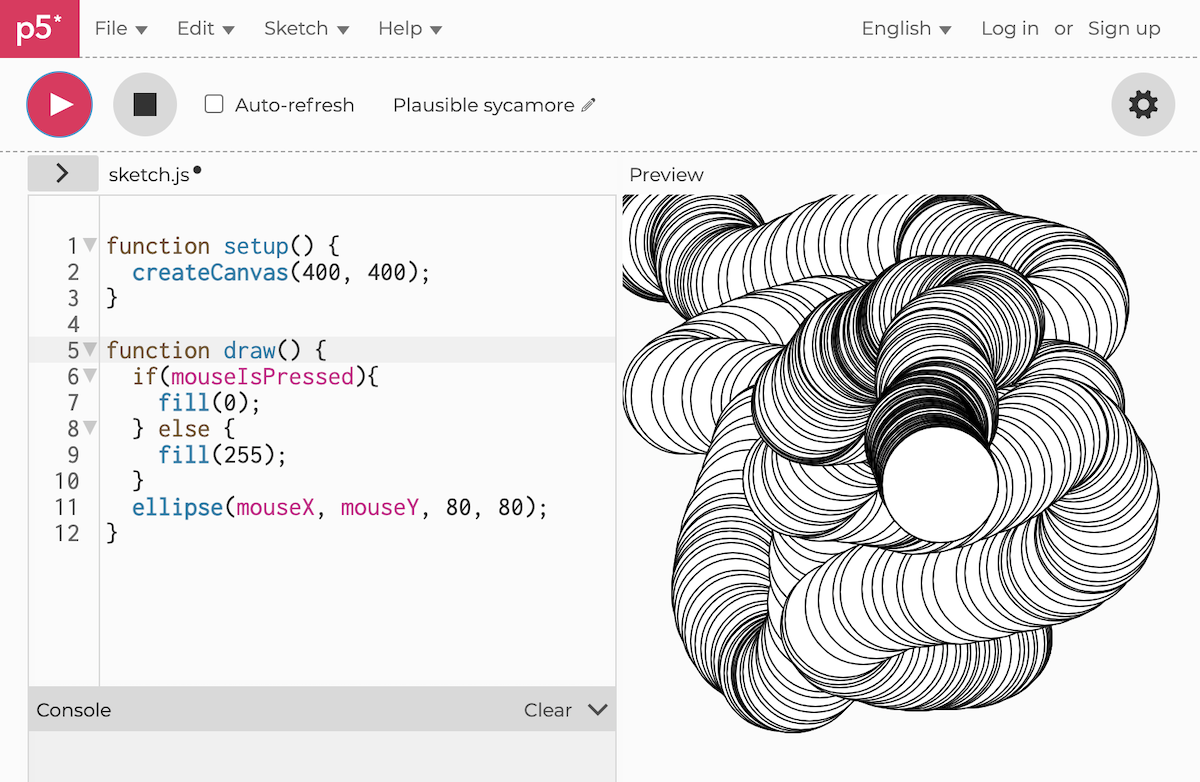
Brief intro to the online editor
Sketch
function setup() {
createCanvas(400, 400);
}
function draw() {
background(128, 191, 255);
rect(80, 190, 180, 100);
ellipse(130, 130, 200, 200);
}Sketch: Example 1
🔗Demo
function setup() {
createCanvas(400, 400);
}
function draw() {
background(249, 199, 79);
fill(248, 150, 30);
strokeWeight(10);
stroke(243, 114, 44);
rect(80, 190, 180, 100);
fill(144, 190, 109);
strokeWeight(20)
stroke(87, 117, 144);
ellipse(130, 130, 200, 200);
fill(67, 170, 139);
strokeWeight(25);
stroke(249, 65, 68);
rect(210, 250, 120, 120);
}Sketch: Example 2
🔗Demo
Part II
• Geometric transformations:
Translation, Rotation, and Scaling
Geometric transformations: Translation
function setup() {
createCanvas(400, 400);
}
function draw() {
background(204);
translate(mouseX, mouseY);
rect(0, 0, 50, 50)
}Geometric transformations: Translation
Activity 1
Observe what happens when we change the position coordinates of the rectangle from
(0, 0) to (-15, -15),
that is, rect(-15, -15, 30, 30)
Also, explore other values in the translate() function in your code and observe how the defined translation behaves.
Geometric transformations: Translation
Geometric transformations: Rotation
function setup() {
createCanvas(400, 400);
}
function draw() {
background(204);
rotate(mouseX/100);
rect(120, 120, 160, 20)
}Move the mouse on the Canvas
Geometric transformations: Rotation
Activity 2
Observe what happens when we change the position coordinates of the rectangle from
(120, 100) to (-80, -10),
that is, rect(-80, -10, 160, 20)
With this change, where is the origin (0, 0)?
With respect to which point will the figure rotate?
Geometric transformations: Rotation
Translation and then Scaling
let angle = 0;translate(mouseX, mouseY);
rotate(angle);
rect(-15, -15, 30, 30);
angle += 0.1;Define a variable:
In the draw() write the following:
A variable stores a value in memory so it can be used later in a program. It can be reused multiple times, and its value can be easily changed while the program runs.
In the previous example, change the order of the translate() and rotate() functions. Observe what happens.
With respect to which point does the figure rotate in this case? Where does the figure move to?
Geometric transformations: Scaling
function setup() {
createCanvas(400, 400);
}
function draw() {
background(204);
translate(mouseX, mouseY);
scale(mouseX/100);
rect(0, 0, 50, 50)
}Move the mouse on the Canvas
Geometric transformations: Scaling
Activity 3 - Notice that in the previous example, the scale() function also affects the square's border, when the scale value increases, the border becomes thicker, and vice versa. To keep the border consistent as the figure changes size, divide the border thickness by the scale factor. To do this, define the following variable inside the draw() function:
let scalarFactor = mouseX / 200;scale(scalarFactor);
strokeWeight(1 / scalarFactor);
rect(-15, -15, 30, 30);Then modify the code as follows:
Explore and analyze what happens on the canvas with these changes. Why do we divide the variable mouseX by 200? Can we divide it by a different value? What happens if we change this number?
Geometric transformations: Scaling
A little Challenge
Move the mouse on the Canvas
In the sketch on the right, an animation appears when the mouse moves over the canvas.
How could you recreate this same animation using the functions covered in this session?
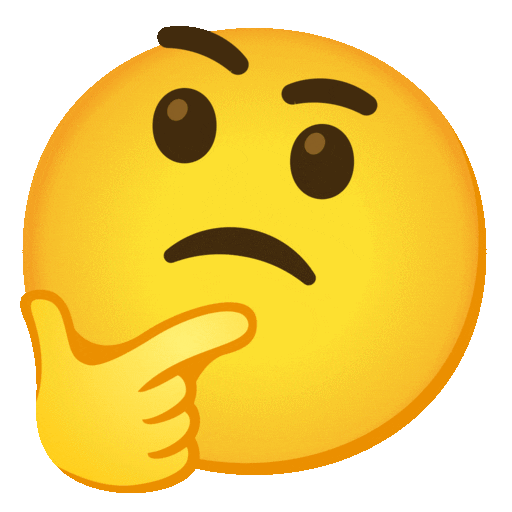
Part III
• The for loop & Conditionals
• Motion
• Functions (If time allows it)
The for loop
function setup() {
createCanvas(400, 400);
}
function draw() {
background(220);
for (let y = 32; y < height; y += 8) {//vertical
for (let x = 12; x < width; x += 15) {// horizontal
fill(25, 55, 255, 140);
ellipse(x, y, 16 - y / 10, 16 - y /10);
}
}
}How would you do this?
The for loop
Conditionals
function setup() {
createCanvas(400, 400);
}
function draw() {
background(220);
stroke(0);
strokeWeight(10);
line(40, 0, 120, height);
if (mouseIsPressed === true) {
stroke(0); // black
} else {
stroke(255, 0, 0); // red
}
square(200, 200, 50);
}- In the sketch on the right, you can see that the circle only grows and changes color when the mouse is inside it. How could you recreate this interaction?
Challenges
- Create an interactive sketch where a square changes color with the mouse. That is, when the cursor is inside the square, it has one color, but when it’s outside, it has a different color.
Conditionals
Motion
function setup() {
// Instructions to get the sketch ready
// Runs once
}
function draw() {
// Instructions for drawing, calculating, etc...
// Runs continuously
}function draw() {
// Instructions for drawing, calculating, etc...
// Runs continuously
}
function draw() {
// Instructions for drawing, calculating, etc...
// Runs continuously
}Motion

function draw() {
// Instructions for drawing, calculating, etc...
// Runs continuously
}To create smooth motion, p5.js tries to run the code inside the draw() function at a rate of 60 frames per second.
A frame is one execution of the draw() function, and the frame rate indicates how many frames are drawn per second.
So, a program that draws 60 frames per second executes all the code inside the draw() function 60 times per second.
Motion
let angle = 0;
let amplitude = 100;
let offset = 100;
let vel = 0.05;
let diameter = 80;
function setup() {
createCanvas(450, 200);
}
function draw() {
background(0);
let y = offset + sin(angle + 0.5) * (amplitude - diameter/2);
circle(width/2, y, diameter);
angle += vel;
}Motion
let x = 50;
let speed = 1.5;
let direction = 1;
let diameter = 80;
function setup() {
createCanvas(500, 200);
}
function draw() {
background(0);
x += speed * direction;
if (x > width - diameter / 2 || x < diameter / 2) {
direction = -direction; // Change direction
}
if (direction == 1) { // Moving to the right
fill(255, 255, 0);
circle(x, 100, diameter);
fill(0);
circle(x + 10, 80, 10);
} else { // Moving to the left
fill(255, 255, 0);
circle(x, 100, diameter);
fill(0);
circle(x - 10, 80, 10);
}
}
Motion
Functions
- setup()
- draw()
- createCanvas()
- line()
- ellipse()
- fill()
- etc...
function myFuncion() {
// Mis instrucciones
}It i possible to define our own functions:
Built-in functions in p5.js
Functions
function setup() {
myFuncion();
}
function myFuncion() {
// Mis instrucciones
}A computer executes programs sequentially, that is, one line of code at a time.
When a function is executed, the computer jumps to where the function is defined and runs the code there, then returns to where it was previously.
How to define functions?
function setup() {
createCanvas(500, 200);
}
function draw() {
background(220);
for(let x = 50; x <= width; x+=100){
pacman(x, 100, x/300);
}
}
function pacman(x, y, s){
// x, y = position
// s = scaling factor
push();
translate(x,y);
scale(s);
arc(0, 0, 50, 50, 3.67, 8.9)
pop();
}